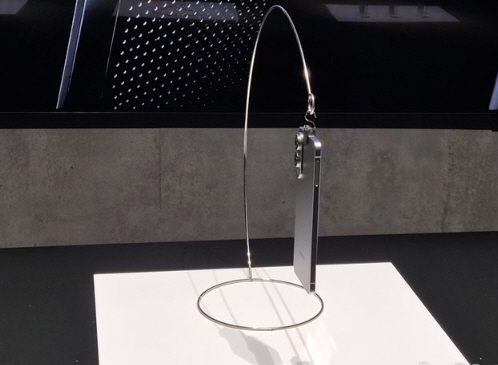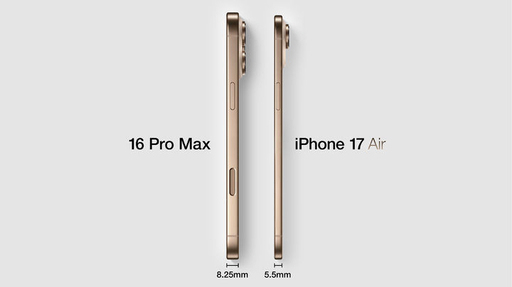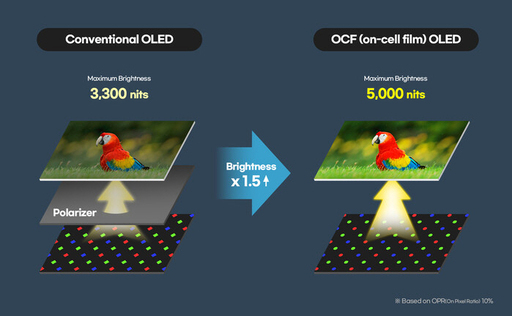



As the competition for "ultra-slim smartphones" among global device manufacturers such as Samsung Electronics and Apple intensifies, the display industry is benefiting from the ripple effect.
According to industry sources on the 20th, Samsung Electronics is preparing to launch the "Galaxy S25 Edge," which is said to be the thinnest model in the history of the Galaxy S series. A Samsung representative stated, "We will hold a public event next month to showcase the Galaxy S25 Edge." The detailed specifications and price will be revealed through an online unpacking event, with the product expected to be released in May. Earlier, Samsung displayed a prototype of the Galaxy S25 Edge at the MWC25 event held in Barcelona, Spain, from March 3-6.
The thickness of the Galaxy S25 Edge's body is approximately 5.84mm, with the camera module included, the total thickness is around 8.3mm. Compared to the Galaxy S25 (7.2mm) and the Galaxy S25 Ultra (8.2mm), it is significantly thinner. The weight is also 162g, the same as the Galaxy S25, but 28g lighter than the S25 Plus.
If the Galaxy S25 is released with the currently known specifications, its thickness will be similar to that of the iPhone 17 Air, but the overall thickness, including the camera module, will be thinner. Apple is expected to unveil the "iPhone 17 Air," which will be the thinnest model this year.
According to IT tipster (information leak) Ice Universe's social media on this day, the body thickness of the "iPhone 17 Air" is reported to be 5.5mm, with the camera module's thickness around 4mm. In particular, Apple is reportedly planning to attempt removing the charging port again, a plan they had previously withdrawn.
Earlier, Apple considered removing the wired charging port but canceled the plan due to the European Union's (EU) mandate for USB-C charging ports. However, with the EU clarifying that fully wireless products would not violate the regulation, analysts believe Apple will attempt to remove the charging port again. According to foreign media such as 9to5Mac, "Federica Miccoli, spokesperson for the EU Commission (EC), stated that wireless devices like the Fortress phone don't require a charging port since wired charging is entirely impossible, meaning they do not need to comply with the EU's standardization of charging ports."
Chinese manufacturers have also released or are preparing to unveil ultra-slim smartphones. Last month, Oppo held a product launch event and introduced its new foldable phone, the "Find N5." This device features a thickness of 4.21mm when unfolded and 8.93mm when folded, reducing the thickness by 26% compared to its predecessor.

As global device manufacturers expand their ultra-slim smartphone offerings, the display industry is benefiting from the ripple effect.
According to UbiResearch's "1Q25 Small OLED Display Market Track" report, the shipment volume of small OLED displays has surged by nearly 200 million units over the past year. In 2023, the shipment volume of small OLED displays was 730 million units, and it is expected to rise to 980 million units in 2024. By 2025, shipments are projected to exceed 1 billion units. Notably, LG Display's supply of OLED panels for iPhones has increased, with shipments rising from 52 million units in 2023 to 68 million units in 2024. Small OLED displays, which have primarily been used in budget smartphones, are now being increasingly incorporated into premium models like the iPhone.
In response, Samsung Display is also unveiling ultra-slim smartphone OLED displays and aiming to secure market share. At this year's MWC, the company introduced a next-generation smartphone OLED that is 1.5 times brighter at the same power consumption and about 20% thinner than existing OLEDs.
The new ultra-high-brightness OLED product boasts a maximum screen brightness of 5000 nits. It offers over 3000 nits of brightness in typical usage scenarios, such as watching movies. Compared to recently released OLEDs for premium smartphones, it is about 1.5 times brighter while maintaining the same power consumption. The thickness of the panel has also been reduced due to the removal of the polarizer. Panels with OCF technology are about 20% thinner than conventional OLED panels with a polarizer.
ChatGPT를 사용하여 번역한 기사입니다.


 Copyright ⓒ 메트로신문 & metroseoul.co.kr
Copyright ⓒ 메트로신문 & metroseoul.co.kr
Copyright ⓒ Metro. All rights reserved. (주)메트로미디어의 모든 기사 또는 컨텐츠에 대한 무단 전재ㆍ복사ㆍ배포를 금합니다.
주식회사 메트로미디어 · 서울특별시 종로구 자하문로17길 18 ㅣ Tel : 02. 721. 9800 / Fax : 02. 730. 2882
문의메일 : webmaster@metroseoul.co.kr ㅣ 대표이사 · 발행인 · 편집인 : 이장규 ㅣ 신문사업 등록번호 : 서울, 가00206
인터넷신문 등록번호 : 서울, 아02546 ㅣ 등록일 : 2013년 3월 20일 ㅣ 제호 : 메트로신문
사업자등록번호 : 242-88-00131 ISSN : 2635-9219 ㅣ 청소년 보호책임자 및 고충처리인 : 안대성